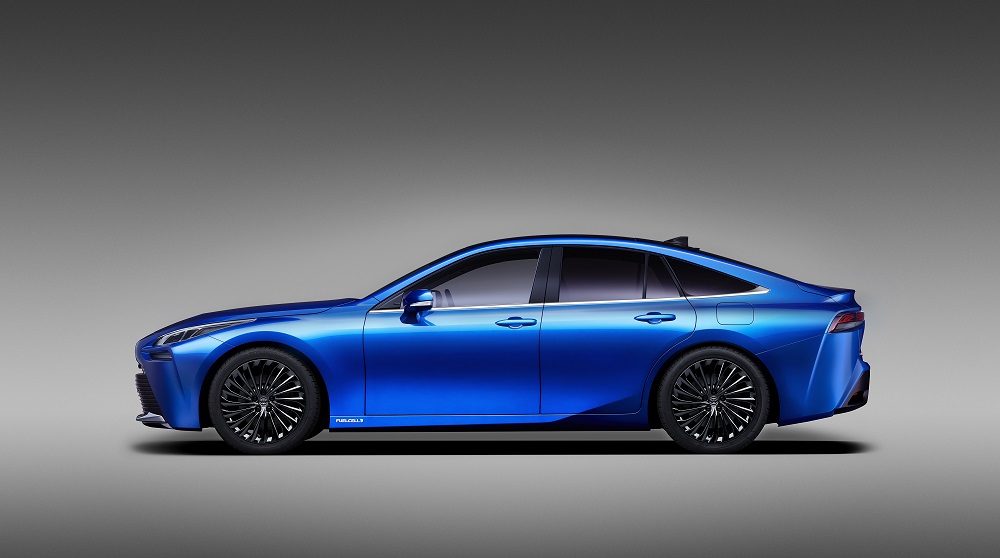
Toyota is targeting a 400-mile range for the new 2021 Mirai, the second generation of the automaker’s hydrogen-powered fuel cell sedan.
Debuted at last year’s Tokyo Motor Show, the Mirai represents more than just an evolution for the nameplate. According to chief engineer Yoshikazu Tanaka, the automaker gave its design and engineering teams a clean slate.
“Within the limitations of the refueling structure…how appealing of a car could we create?” Tanaka asked, a summary of his mission with the new Mirai.
Toyota is targeting 10 times the sales volume of the current Mirai, which meant a complete overhaul of a car that, while technologically advanced, wasn’t capturing buyers — in part because of its uninteresting design and also because the fuel-cell refueling infrastructure hasn’t developed as quickly as anticipated.
Related: Learn more about Toyota’s alternative-fuel vehicle options
Though there’s still no official specs for the production 2021 Mirai, the concept Toyota presented last October in Tokyo was a stunner, and based on later statements by Tanaka, there’s reason to believe the final thing will look more or less the same.
To get the proportions right, the Mirai powertrain components needed to be completely relocated. Whereas the fuel-cell stack was previously located between the driver and passenger, it was moved to the front of the car while the motor was placed at the rear. The new Mirai also has rear-wheel drive, which will help enhance its driving dynamics.
Related: Toyota to cut North American emissions by 40 percent
Other than the design, the other big target was improving the already considerable range. Toyota always aimed to outdo the current Mirai’s 312-mile range, but Tanaka says that eventually, the team set the goal at 400 miles for “the wow factor.”
More range requires more efficient fuel-cell stacks and more hydrogen, but that’s a lot of research and development work. Why not just add a battery pack? “We get that question a lot in Japan about the battery pack,” Tanaka says. “The reason is, in order to improve the hydrogen infrastructure you need to use and consume it — so if you make it chargeable at home, then those people won’t consume the hydrogen.”
Ultimately, he said, it’s about creating a demand for the infrastructure that needs to be in place for more hydrogen fuel cell vehicles to thrive. The new 2021 Mirai will be sold in the United States, Europe, and Japan starting at the end of 2020, and depending on its success, Toyota may even create an entire family of Mirai models.
Kurt Verlin was born in France and lives in the United States. Throughout his life he was always told French was the language of romance, but it was English he fell in love with. He likes cats, music, cars, 30 Rock, Formula 1, and pretending to be a race car driver in simulators; but most of all, he just likes to write about it all. See more articles by Kurt.